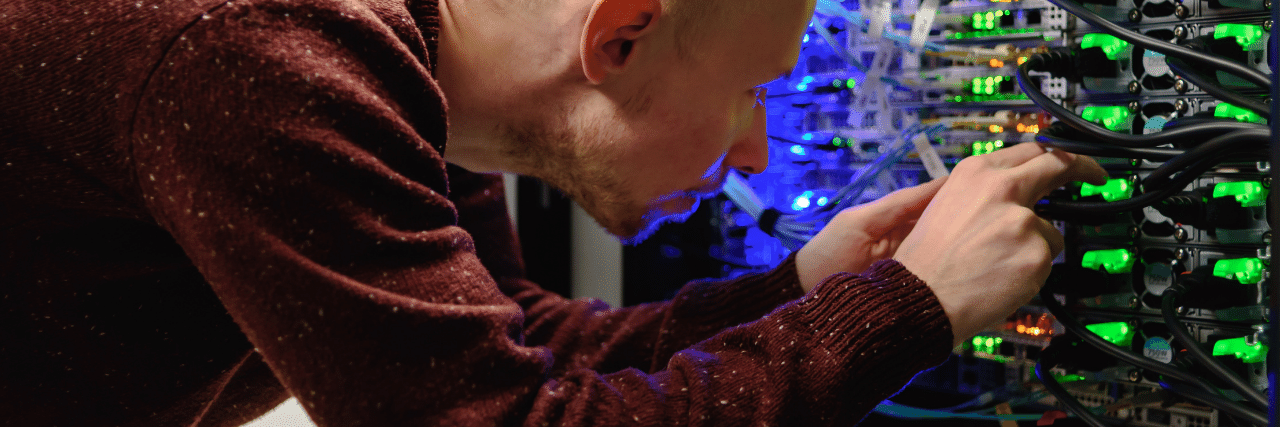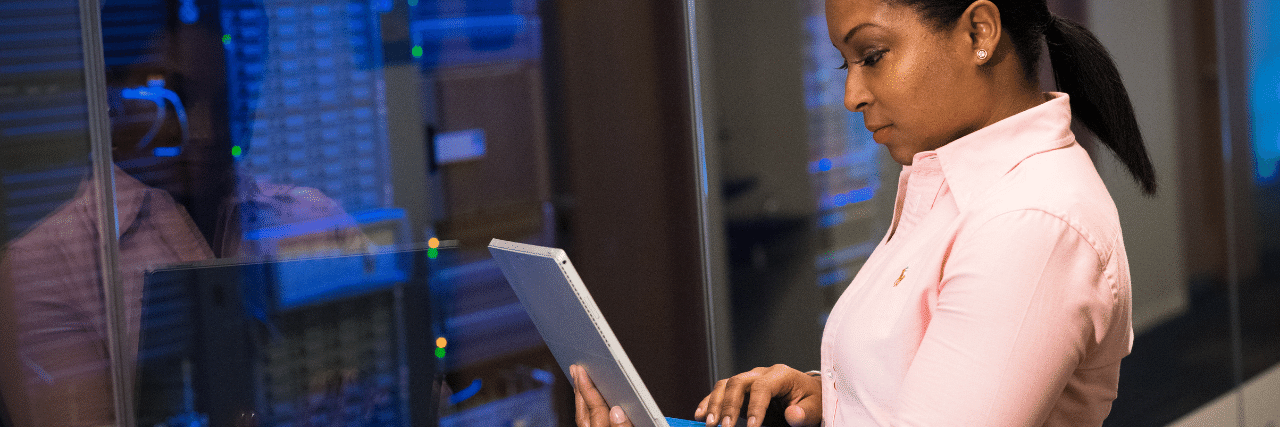BDR vs Carbonite: Which is a Better Backup for Your Business?
August 24th, 2021 | 6 min. read

Unsure if you should go with BDR or Carbonite? Data backups are more important now than ever - weigh the pros and cons of Carbonite and BDR and compare BDR vs Carbonite according to key factors by reading this article.
As work environments have shifted online, excellent backup systems are now industry standards. You know precisely how data backups affect your company, but now you’re faced with the dilemma of choosing the best way to backup your data.
The terms BDR and Carbonite might have come up while looking for options, and now you want to know more about them. Clients have asked us about these two options, as we are a Managed IT Service Provider in charge of our client's IT infrastructure.
In this article, we’ll be consolidating real-life experiences from Intelligent Technical Solutions’ clients and comparing Carbonite and BDR toe-to-toe.
We’ll be taking a look at the differences between BDR & Carbonite based on key details such as:
- Definition
- Set-up & Hardware
- Features
- Services
- Cost
By the end of this article, you’ll also know which is a better fit for your business and what you can do if you can’t back up your data just yet.
What are BDR and Carbonite? (Definitions) Comparing BDR and Carbonite
BDR stands for Backup and Data Recovery, while Carbonite is software that backs up your data. They have the same goal - to keep a record of your files in case of a data breach. However, BDR is an entire system, while Carbonite is a specific program.

Let’s say you were hacked, and you lost all access to your server. If you had Carbonite, you’d have all your files, but nowhere to put them so your employees could access them. Your BDR would be ready to replace your main server while your IT team fixed your primary server.
Think of it as a generator vs. a power bank. A generator can power up the entire building to a certain extent to continue to function, while a power bank is an essential tool used in a pinch.
The Set-up & Hardware of BDR and Carbonite
If you want to set up BDR or Carbonite, you need to take two things into account: the manpower involved, and the materials required.

For both BDR and Carbonite, your IT team needs to maintain aspects of the system. BDR involves your team taking care of more things than Carbonite because there are more components to a BDR system. BDR needs a complete set up which can potentially take longer.
BDR is more complex as you need to create a whole other server. Thus, you need to adapt the RAM, hard drive, and software to what you need. You also need a well-ventilated and secure space to keep your server and choose between different kinds of server racks.
Carbonite is more straightforward in terms of setup; your IT team needs to check which files are uploaded and if they’re appropriately organized. You also only need the following hardware requirements: Dual-core CPU, 2GB of RAM or higher, 10GB or more of disk space.
The Features of BDR and Carbonite
BDR and Carbonite have similar features, as their goal is the same: backup your data. The main difference between their features is what happens when you lose your server.
BDR functions as a backup server that can be up and running in a few hours or so. Carbonite has backup files but cannot act as a server for your entire company. You will still need to set up hardware and software, which could take up to two weeks, depending on logistics and the whole backup process.
BDR allows for MSPs, and IT teams to make an instant access server, while Carbonite offers versioning.
“Let’s say [the ransomware] renames your files, and Carbonite would back up these scrambled files. But you can say, ‘Give me these files from these versions.’ [Carbonite] should still be able to recover these files.” Peter Swarowski, ITS’ Director of Operations, shared.
“[But] usually when you get into the more severe circumstances, that’s when it [BDR] is going to have a leg-up on Carbonite,” Swarowski continued. “[On Carbonite] it may take between 2 days to 2 weeks to get the server up and running again on separate hardware, depending on how much data you have and how many servers you need to buy.”
However, he noted that if you’re a business whose operations won’t be affected by a lost server for a few days or weeks, then BDR might not be an urgent need for you.
The Security of BDR & Carbonite
Best practices such as Multi-factor Authentication, file encryption, and limited access are necessary for both Carbonite and BDR. However, the level of security of each option can vary depending on how your IT team sets it up.
For Carbonite, you might have an easier time setting up security, as you need to protect only a single program. However, you still need to ensure the files are secure and that your account with Carbonite is also protected.
BDR is more secure if you can set it up correctly, as it allows for complete control over the various factors that go into it, such as the Operation System (OS) used, the hardware, and the backup software. For example, you can keep it separate from your system even though you’re backing files into it. This helps avoid potential hacking scenarios.
However, this control comes with the disadvantage of needing a highly knowledgeable IT team.

BDR is also onsite with offsite backups, while Carbonite only has offsite locations.
Overall, both BDR and Carbonite are secure options. You need to decide what level of security you want for your backup.
The Cost of BDR and Carbonite
The factors that go into the cost of getting a backup are software, hardware, maintenance, and data storage needed. Carbonite simplifies this for you by offering plans that go up to $104 per year, while BDRs take a bit more research if you want to do everything yourself.
For BDR, you’d need to take the individual costs of each factor to determine the price. You would need to have a thorough knowledge of how to choose the best IT tools for your business. Then, it would be best if you researched different kinds of data backups, types of hardware, reliable software, and BDR management.
As a rough estimate, you should prepare anywhere between $600 to $1500 for the hardware costs. However, this can go up or down depending on what equipment you buy. Then you’d need to factor in the maintenance costs of the server, as well as possible upgrades if your company acquires more data it needs to backup.
If you have an MSP, you should ask your MSP about the costs of a BDR. But as an example, it costs $200 a month for 32 GB worth of RAM, 2 Terabytes worth of storage, with monthly maintenance at ITS. However, this price will rise if you have more data that needs to be stored.
Who Needs Backups like BDR or Carbonite?
All companies need backups. Some companies are dealing with sensitive information that might need it more. Still, if you’re collecting any data on a digital scale, or if your employees need access to digitized files, you need a backup system for that data.
“You want to have car insurance before you get into a car accident,” Swarowski cautioned. This is the same scenario - you need different kinds of backups before losing your data.
Which is right for you: BDR or Carbonite?
While thinking about choosing between BDR and Carbonite, take a look at the following table about the main differences between them:
| Backup and Data Recovery (BDR) | Carbonite | |
| Definition |
|
|
| Set-up & Hardware |
|
|
| Features |
|
|
| Security |
|
|
| Cost |
|
|
Bottom line: if you’re looking for a more encompassing data backup plan as an immediately ready-to-go server, go with BDR. If you just need to back up files and don’t mind taking the risk of losing your server for a few days or weeks, go with Carbonite.
However, if you still have some questions about backing up data and don’t want to plunge into spending anything yet, take a look at this article about 7 bad habits that cause data breaches. That way, despite not having a backup, you can immediately protect your company from possible hacks or ransomware.
But if you’re interested in a further explanation about BDR and Carbonite or are already looking into getting BDR from an MSP, contact us! ITS has set up multiple BDR projects for our clients, and our experts will help free up your time to focus on the more important aspects of your business.
Kharmela Mindanao is a senior content writer for Intelligent Technical Solutions. She’s called Ella by her friends and likes yoga, literature, and mountain climbing. Her favorite book is Anxious People by Fredrik Backman. She creates art and poetry and is on a quest to find the best cheesecake.
Topics:
